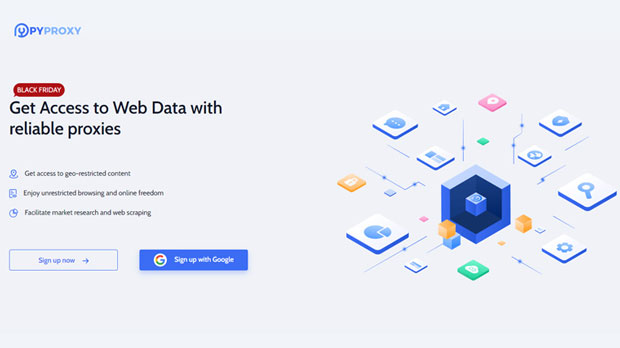Are there any security risks associated with the use of free residential SOCKS5 proxies?
In recent years, the demand for proxies has risen significantly due to the growing need for online privacy, anonymity, and bypassing geo-restrictions. Among the many types of proxies available, socks5 proxies, especially the free residential ones, have become increasingly popular. While these proxies offer an easy and cost-effective way to hide one’s IP address, questions about their security have surfaced. This article explores whether using free residential SOCKS5 proxies poses any security risks, offering a detailed analysis of potential vulnerabilities, privacy concerns, and the broader implications for users. Understanding SOCKS5 ProxiesTo understand the security concerns associated with free residential SOCKS5 proxies, it’s important to first explain what SOCKS5 proxies are and how they function. SOCKS5 is a protocol used by proxy servers to relay data between a user’s device and the internet. Unlike traditional HTTP proxies, which only work with web traffic, SOCKS5 proxies are versatile and can handle a variety of protocols, including HTTP, HTTPS, FTP, and more. This makes SOCKS5 proxies more flexible for different types of online activities. residential proxies, on the other hand, are tied to actual residential IP addresses, making them appear as legitimate users of the internet. When combined with the SOCKS5 protocol, residential proxies offer a more natural way to mask your IP address, providing better anonymity and less likelihood of being flagged by websites compared to data center proxies.The Appeal of Free Residential SOCKS5 ProxiesThe main draw of free residential SOCKS5 proxies is, of course, their cost – or rather, the lack thereof. Many individuals and businesses seek out free proxies as a budget-friendly solution to their needs, whether it’s for accessing geo-blocked content, conducting research, or protecting their privacy while browsing the web. Free residential SOCKS5 proxies seem particularly appealing because they promise to offer the benefits of residential IP addresses, which are harder to detect and block.However, while they may seem like a good deal, it’s important to understand the potential security risks associated with using these proxies.Security Risks of Using Free Residential SOCKS5 Proxies1. Lack of Trustworthy Providers One of the most significant risks when using free residential SOCKS5 proxies is the uncertainty around the provider’s reliability and intentions. Many free proxies are offered by unknown parties who may not have any incentive to safeguard user privacy. Free proxies are often operated with minimal oversight, and without proper accountability, the risk of malicious activity increases.2. Data Interception and Logging While proxies are designed to route your internet traffic through a third-party server, free SOCKS5 proxies may not offer sufficient encryption or protection. This opens the door for hackers or the proxy provider themselves to intercept the data being sent or received. Sensitive information such as login credentials, personal data, and payment details can be exposed to malicious actors. Furthermore, some free proxies may keep logs of user activity, which can be shared with third parties or sold for profit. This defeats the purpose of using a proxy for privacy in the first place.3. Malware and Phishing Risks Free residential SOCKS5 proxies may also serve as a vector for distributing malware. Unscrupulous providers can inject malicious code into the data stream, infecting your device when you connect through their proxy server. Additionally, free proxies are sometimes set up to capture personal information, such as credit card numbers or login credentials, through phishing attacks.4. IP and DNS Leaks Although SOCKS5 proxies are designed to mask your real IP address, using free proxies increases the likelihood of IP or DNS leaks. This happens when your true IP address is exposed due to vulnerabilities in the proxy or improper configuration. DNS leaks can also occur when DNS queries bypass the proxy server, revealing your browsing activity to your Internet Service Provider (ISP) or anyone monitoring your traffic.5. Limited Bandwidth and Reliability Free proxies, including residential SOCKS5 ones, are often shared among many users. This leads to limited bandwidth, slower speeds, and more frequent connection failures. These issues can make the proxy unreliable and difficult to use for extended periods. In some cases, unreliable proxies can cause disruptions in sensitive activities such as online banking or shopping, where time-sensitive transactions are common.6. Legal and Ethical Implications Some free proxy providers may engage in questionable practices, such as using residential IP addresses without proper consent. The use of these IPs could potentially lead to legal issues, as they may have been harvested without authorization from unsuspecting users. Additionally, if the proxy service is used for activities like fraud, hacking, or other illicit actions, the person using the proxy could be held accountable for illegal behavior, even if they weren’t directly responsible for the initial breach.Privacy Concerns with Free Residential SOCKS5 ProxiesPrivacy is often the primary reason people turn to proxies, but when it comes to free residential SOCKS5 proxies, there are serious concerns about how well privacy is maintained. As mentioned earlier, the lack of trustworthiness in free proxy providers is a significant concern. Without a transparent privacy policy and clear data protection measures, users may unknowingly give up more of their privacy than they intend to.Many free proxy providers may collect data on your browsing habits, online purchases, and other sensitive activities. This data can be sold to advertisers or third parties, which not only violates your privacy but also undermines the anonymity that you sought by using a proxy in the first place.Best Practices for Using Proxies SafelyIf you choose to use a socks5 proxy, especially a free residential one, there are several steps you can take to minimize the risks:1. Use Trusted Providers – Always verify the trustworthiness of the proxy provider before using their service. Look for reviews, check their privacy policy, and ensure that they offer encryption and do not log your activity.2. Use Secure Websites – Whenever you’re using a proxy, ensure that the websites you visit use HTTPS, which provides additional encryption. This adds a layer of security even if the proxy itself is not fully secure.3. Utilize VPNs – Pairing your SOCKS5 proxy with a reliable VPN can add an extra layer of protection, helping to encrypt your traffic and prevent DNS or IP leaks.4. Regularly Change Proxies – If you’re using free proxies, consider switching them regularly to minimize the risk of exposure. This reduces the likelihood of any single proxy being compromised.5. Avoid Sensitive Activities – Refrain from accessing sensitive accounts, such as banking or email, while using a free residential SOCKS5 proxy. It’s safer to limit your use of such proxies to less critical activities.ConclusionWhile free residential SOCKS5 proxies may seem like an attractive option for those looking to maintain anonymity online, the security risks associated with them should not be underestimated. From potential data interception to privacy violations and even malware risks, these proxies can expose users to a range of threats. The best approach is to weigh the benefits against the risks, and if privacy and security are paramount, consider using a trusted, paid service that offers proper encryption, accountability, and transparency.In the end, online privacy and security are too important to leave to chance, and it is always worth investing in a solution that prioritizes user safety.
2025-01-07
























































